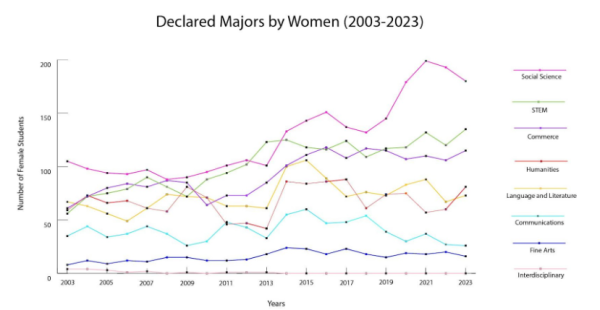Sorority meal plans may lose flexibility
Sorority meal plans to return to less flexible model if women fail to swipe ID cards
October 5, 2015
Meal flexibility across campus may be reduced for sorority women if most members continue to eat meals without swiping their university ID card, according to Director of Dining Services Michael Zanie.
“Less than thirty percent of the people that eat at the sorority houses are swiping for their meals,” Zanie said. “If things don’t improve in regards to swiping, meal exchange functionality could be turned off for sorority members.”
This year’s new meal plan allows for a greater range of flexibility for sorority members. Meal swipes can now be used at one of the six houses or at locations across campus such as D-Hall, Co-op and Hillel’s E. Café. In the past, members could only use meal swipes at the houses themselves.
“Upper division students now have the freedom to eat anywhere on campus and at times of their choosing,” Zanie said. “I strongly believe that the new meal plan scenario facilitates positive interactions between class years, genders, Greek and non-Greek affiliation, teams and so many others.”
Just as students are required to swipe for a meal at co-op, sorority members are expected to swipe their cards to pay for their meals at the sorority houses. However, many houses are recording extremely low numbers of swipes.
“I checked the swipe machine on Monday,” said Ryan Huffer, the sous chef at the Kappa Kappa Gamma House. “Only 35 people total had swiped for lunch and chapter dinner. I know that is just not correct.”
Zanie said kitchen staff members conduct head counts and plate counts for almost every meal and are seeing only about 30 percent of all sorority members swiping for their meals at the houses.
“People at The Marketplace are very diligent about swiping, even when someone isn’t there. Somehow that spirit goes away once you get up the hill,” Zanie said.
Revenue from meal plans is assigned to locations across campus based on which locations are frequented the most.
“All the money for meals is in a big university account and not a sorority specific account. Based on where the swipes happen, that is how we assign the revenue. Because we don’t know who is eating where we don’t really know how much money to attribute to sorority dining.”
According to Assistant Director of Dining Services Dwight Bitz, it is difficult to assign the correct amount of revenue to the sorority houses if many meals are left unaccounted for.
“Our food costs the first week were 292 percent over budget,” Bitz said. “The business office is only going to move the revenue based on these swipes.”
In addition to assigning revenue, recording swipes at the sorority houses also allows the kitchens to see which menu options are most popular.
“We want people to swipe at the house they think has the best food, or where they ate the most,” Huffer said. “Then we can begin tracking which meals are most popular and start re-vamping our menus.”
Sorority members are enjoying the flexibility of being able to use their meal swipes, as Co-op sales are booming, according to both Zanie and Huffer. However, this option could soon be taken away if accountability for meals does not increase for in-house dining.
“Accountability is a necessary counterpoint to the new privileges,” Zanie said. “I sincerely hope that a positive outcome can be reached without threatening to, or following through with a course of action such as removing meal exchange functionality.”
Zanie said Dining Services will continue to track the location of swiped meals for sorority women over the course of the fall semester. If numbers do not improve, members will return to the less flexible meal program of the past.
“The meals would only work at the sorority,” Zanie said. “I would hate to do it—it runs completely counter to our entire philosophy on what we want the campus dining culture to be. Marketplace, Cafe 77, E Café and Brief Stop would no longer take their meal exchanges in that scenario.”













